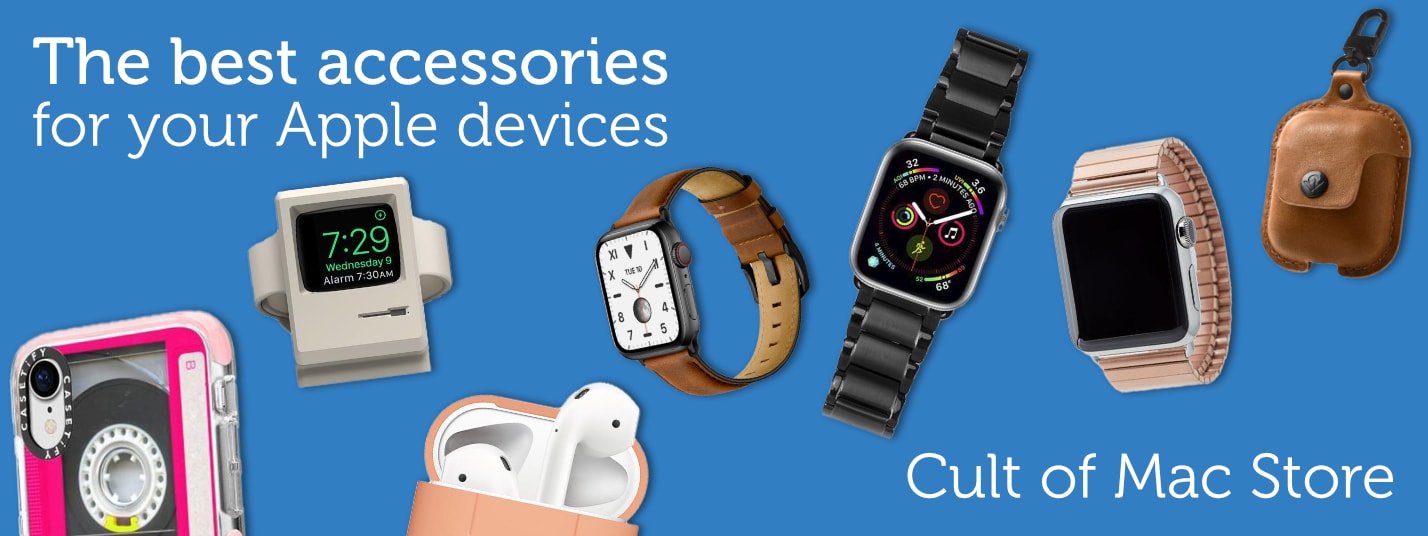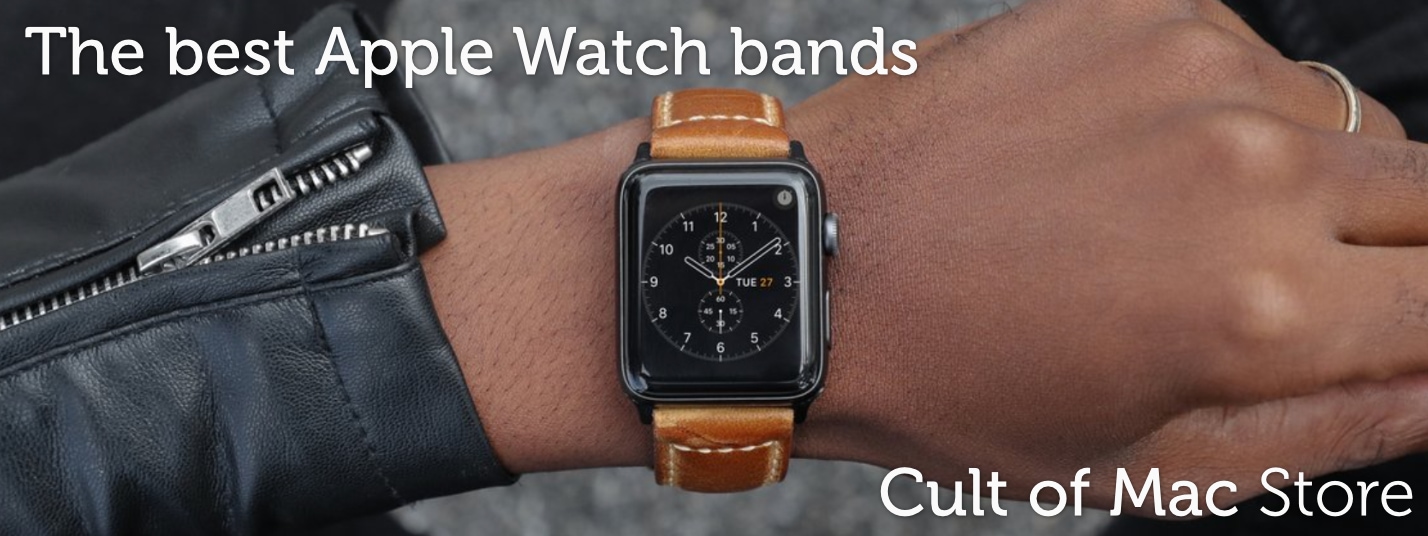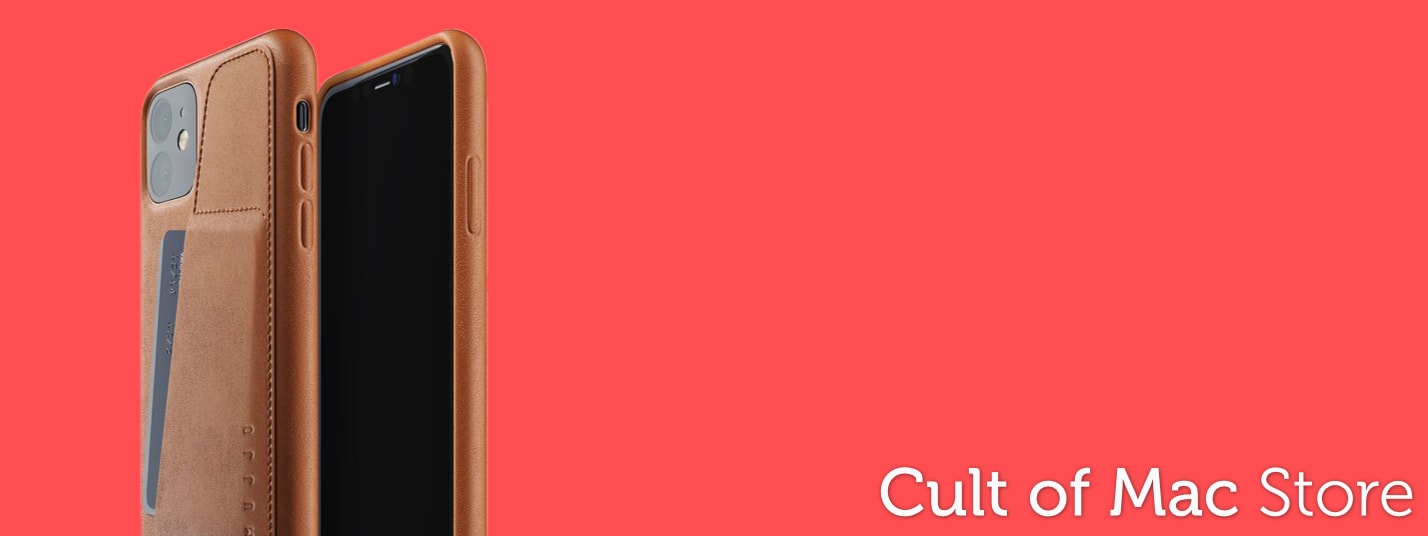-
Make music like a pro with the best audio interfaces for Mac
Make music like a pro with the best audio interfaces for Mac
By David Snow · April 16, 2024For great sound quality in your audio recordings, you need the best audio interface for Mac. We'll help you find the right one. more...
-
Sketchy report says base iPhone 16 Pro storage will double
By Ed Hardy · April 16, 2024 -
Silo star drops major hints about sci-fi hit’s future on Apple TV+
By David Snow · April 16, 2024 -
Nab Apple Watch SE 2 for up to $60 off on Amazon
By David Snow · April 16, 2024 -
Big curved Dell 4K display serves MacBook duo [Setups]
By David Snow · April 15, 2024
Latest Posts
-
- News
Slow Horses author brings new thriller to Apple TV+
By David Snow · April 16, 2024 -
- News
Goodbye Leather Apple ad raises questions about FineWoven iPhone cases
By Ed Hardy · April 16, 2024 -
- Daily Deals
Inkless pocket printer can print out photos, notes and more for less than $70
By Cult of Mac Deals · April 16, 2024 -
- News
Apple could finally fix iPhone’s longstanding camera flare problem
By Rajesh Pandey · April 15, 2024
-
First NES emulator for iPhone approved by Apple but pulled by developer
-
Keep your Nintendo Switch charged while you play in 4K with this $36 dock/charger
-
Today in Apple history: Cupertino fires back after Microsoft’s ‘Apple tax’ ads
-
Leaks suggest Bose SoundLink Max speaker about to launch
-
Let AI write your perfect resume with this $35 job-hunting tool
-
Grab a great deal on M1 iMac while you can
-
Apple TV+ brings huge Hollywood scam to the screen
-
Snag a refurbished iPad Pro for just $160
-
First iPhone Game Boy emulator quickly disappears from App Store
-
Rode’s new wireless mic and MagSafe mounts elevate iPhone videography
Popular Now
-
5 essential Mac settings you should change
-
Big curved Dell 4K display serves MacBook duo [Setups]
-
Slow Horses author brings new thriller to Apple TV+
-
Apple TV+ brings huge Hollywood scam to the screen
-
Colin Farrell’s gritty detective series Sugar becomes an immediate hit
-
Apple could finally fix iPhone’s longstanding camera flare problem
-
Make music like a pro with the best audio interfaces for Mac
-
Silo star drops major hints about sci-fi hit’s future on Apple TV+
-
Snag a refurbished iPad Pro for just $160 [Deals]
How-Tos and Tips
-
- How-To
How to quickly queue songs on Apple Music (and clear the queue)
By D. Griffin Jones · April 11, 2024 -
- How-To
How to scan QR codes on iPhone
By D. Griffin Jones · April 8, 2024 -
- How-To
Share passwords with your family on iPhone
By D. Griffin Jones · April 3, 2024 -
- How-To
How to tweak your iPhone’s Home Screen
By Rajesh Pandey · March 26, 2024 -
- How-To
Crank up Safari’s privacy to the max
By D. Griffin Jones · March 20, 2024 -
- How-To
These are the best and coolest Apple Watch faces
By D. Griffin Jones · March 16, 2024
Cult of Mac Giveaways
Win a rugged and waterproof Apple Watch sport band
Got an Apple Watch? Then you should enter our giveaway to win a tough-but-beautiful Lululook Waterproof FKM Sport Band. >>>
Setups
-
- setups
Big curved Dell 4K display serves MacBook duo
By David Snow · April 15, 2024 -
- setups
You wish you had this MacBook workstation’s killer keyboard
By David Snow · April 12, 2024 -
- setups
Dual-display rig boasts speedy M3 and M2 MacBooks
By David Snow · April 10, 2024
Latest Videos
- Cult of Mac Videos
-
The Best Games on Apple Arcade
The Best Games on Apple Arcade
-
What to Expect at Apple WWDC 24: AI Takes Center Stage?
What to Expect at Apple WWDC 24: AI Takes Center Stage?
-
7 Reasons the Apple TV is Better than Roku
7 Reasons the Apple TV is Better than Roku
-
Should You Buy a Desktop Mac or a MacBook?
Should You Buy a Desktop Mac or a MacBook?
-
Apple Watch Face TIER LIST
Apple Watch Face TIER LIST
Today in Apple History
- History
Apple II brings color computing to the masses
On April 17, 1977, the Apple II debuted at the West Coast Computer Faire, putting Apple at the forefront of the personal computer revolution. >>>
Latest Apple TV+
- Apple TV+
Can dimension-shifting Constellation nail its season finale?
On the Apple TV+ sci-fi show, you should never believe what you think is reality. Will "Constellation" season finale wrap up its loose ends? >>>
Daily Deals
-
- Daily Deals
Keep your Nintendo Switch charged while you play in 4K with this $36 dock/charger
By Cult of Mac Deals · April 16, 2024 -
- Daily Deals
Let AI write your perfect resume with this $35 job-hunting tool
By Cult of Mac Deals · April 15, 2024 -
- Daily Deals
Grab a great deal on M1 iMac while you can
By David Snow · April 15, 2024 -
- Daily Deals
Snag a refurbished iPad Pro for just $160
By Cult of Mac Deals · April 15, 2024 -
- Daily Deals
Forget pricey piano lessons. Learn to play at home with this AI-powered app.
By Cult of Mac Deals · April 14, 2024 -
- Daily Deals
Get a scanning app compatible with iPhone and iPad for less than $32
By Cult of Mac Deals · April 14, 2024
Reviews and Recommendations
-
- reviews
Belkin iPhone stand cleverly keeps camera focused on you
By Ed Hardy · April 8, 2024 -
- reviews
These are the best games on Apple Arcade
By D. Griffin Jones · April 6, 2024 -
- reviews
A good chair for your setup doesn’t have to break the bank
By David Snow · April 4, 2024 -
- reviews
Best external SSDs for Mac or iPad in 2024
By Ed Hardy · March 31, 2024 -
- reviews
7 reasons to get an Apple TV instead of a Roku
By D. Griffin Jones · March 30, 2024 -
- reviews
Baseus laptop power bank proves that thin is in
By Ed Hardy · March 25, 2024
Newsletters
Daily round-ups or a weekly refresher, straight from Cult of Mac to your inbox.
-

The Weekender
The week's best Apple news, reviews and how-tos from Cult of Mac, every Saturday morning.
Our readers say:
"Always posting cool stuff" -- Vaughn Nevins.
"Very informative" -- Kenly Xavier.




